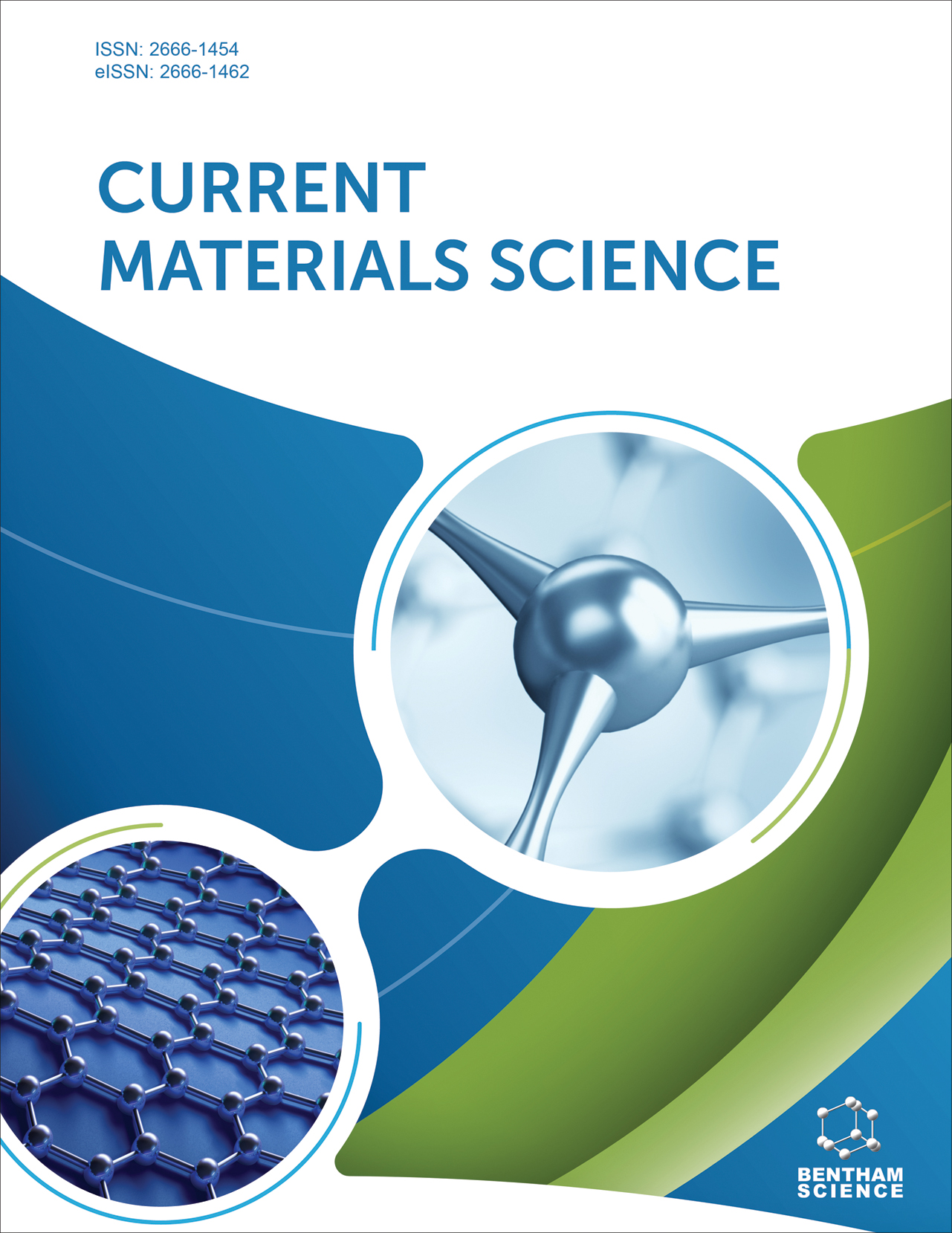- Home
- A-Z Publications
- Current Materials Science
- Previous Issues
- Volume 17, Issue 2, 2024
Current Materials Science - Volume 17, Issue 2, 2024
Volume 17, Issue 2, 2024
- Materials Science and Nanotechnology
-
-
-
Recent Advances in Biomaterial Design for Bone Regenerative Therapy: A Mini Review
More LessLongevity has been associated with morbidity and an increase in age-related illnesses, linked to tissue degeneration and gradual loss of biological functions. Bone is an important organ that gradually degenerates with increasing lifespan. The remodeling phase plays a huge role in maintaining the ability of bone to regenerate and maintain its stability and function throughout life. Hence, bone health represen Read More
-
-
-
-
Review on Biomass Derived Activated Carbons as Electrochemical Electrode Material for Supercapacitor Device
More LessAuthors: Pooja Kadyan, Sonia Grover and Raj Kishore SharmaTo face the challenge of the finite nature of fossil fuels and large energy crises across the globe, there is an urgent requirement for sustainable and renewable energy sources. Moreover, it is essential to focus on energy storage in order to meet the demand of future generations. Among various energy storage devices such as fuel cells, batteries, capacitors, supercapacitors, flywheels, etc., it is the supercapacitor device that has Read More
-
-
-
Quality by Design Enabled β-Cyclodextrin Complexes of Lisinopril by Kneading Method: Improved Solubility and Bioavailability
More LessAuthors: Azeez Mohammad, Sumer Singh, Suryakanta Swain and Debashish GhoseBackground The primary intent of the study is to formulate the inclusion complex of lisinopril with the varied compositions of polymers like β-cyclodextrin for the enhancement of oral drug solubility and bioavailability using QbD approach. Methods The application of Box-behnken design to determine the optimized run from the prepared inclusion complexes. The physical kneading technique with β-cyclodextrin at varied amo Read More
-
-
-
A Convolution Neural Network-based Approach for Metal Surface Roughness Evaluation
More LessAuthors: Zengren Pan, Yanhui Liu, Zhiwei Li, Qiwen Xun and Ying WuBackground Metal surface roughness detection is an essential step of quality control in the metal processing industry. Due to the high manual involvement and poor efficiency of traditional roughness testing, rapid automated vision detection has received increasing attention in product quality control. Many methods have focused on extracting features related to roughness from images by means of mathematical statisti Read More
-
-
-
Photocatalytic Performance of the BaSn-based Nanoscale Materials for the Organic Pollutants Enhanced by Sm (Er) Doping
More LessAuthors: Xiaoyu Wang, Zizhan Sun, FeihuTao1, Xu Zhang and Lizhai PeiBackground Sm (Er) doping is an effective strategy for enhancing the photocatalytic activity of the semiconductor photocatalysts for the degradation of organic pollutants. BaSn-based nanorods possess wide band gap energy, which limits the photocatalytic application. It is important to research the feasibility of the improved photocatalytic performance of the BaSn-based nanorods by doping with Sm (Er). Objective Th Read More
-
Most Read This Month
Article
content/journals/cms
Journal
10
5
false
en


